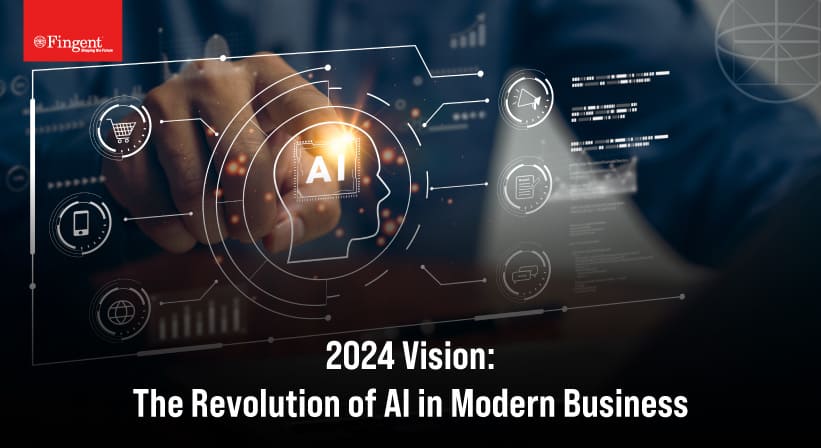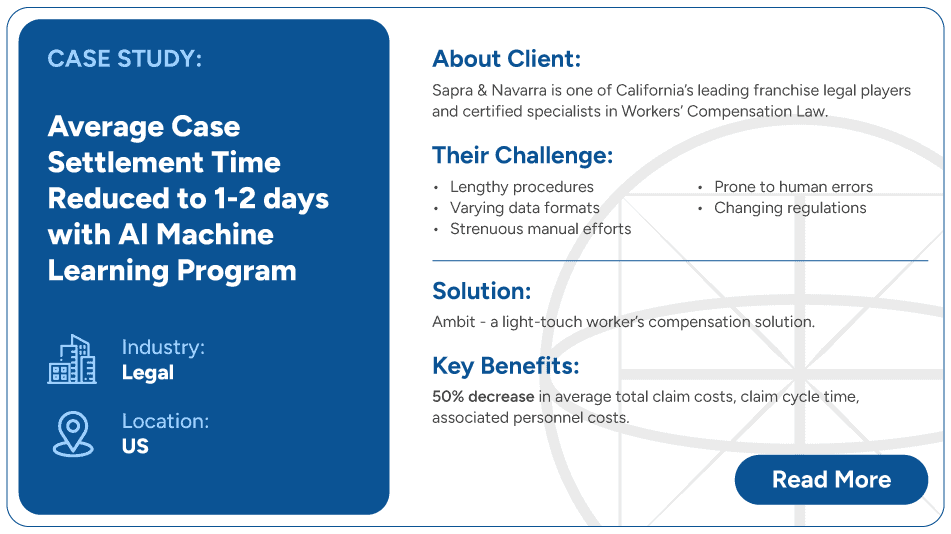Applied AI For Document Processing
“It’s becoming increasingly clear that AI is the future, and almost everything else is a sideshow.” – World-renowned computer scientist Geoff Hinton
AI has taken over almost every aspect of society. It provides a wide range of benefits that have accelerated its traction in the modern era and caused it to sink its roots deeper into society. Document processing is one of the sectors in management that has stood to benefit the most from artificial intelligence. This article will explain how to make the most of this fortuitous union.
The Use of AI In Document Processing
For years, documents have been manually created on paper or Excel sheets. Data and valuable insights from these documents have also been manually retrieved. Thus, the data approval processes require the physical circulation of files and documents. Dissemination relies on printing or electronic means, making processes more lengthy and strenuous.
Revision and editing are also conducted manually, with adherence to storage protocols for archiving purposes. Compliance and auditing necessitate the completion of reports and paperwork by hand. While these conventional procedures have been the standard practice for some time, they are prone to inefficiencies, lengthy labor hours, and data insecurity.
The use of AI in document processing has completely changed how businesses manage paperwork by providing automation, increased accuracy, and efficiency. AI technologies allow for automatic information extraction, analysis, and classification from documents. Examples of these technologies include machine learning, optical character recognition (OCR), and natural language processing (NLP). These systems help with intelligent decision-making, extract important insights from documents, and classify them.
AI-driven document processing systems minimize mistakes and eliminate the need for human data entry by automatically identifying, extracting, and validating data. AI also improves text comprehension and accessibility by enabling advanced capabilities like sentiment analysis, summarization, and language translation. All things considered, AI in document processing improves productivity, accelerates procedures, and simplifies workflows, all of which significantly benefit businesses in various sectors.
Simplify Business Processes with AI Automation.
Common Challenges in Document Processing
1. Manual Data Entry and Its Limitations
With manual data entry, there is inevitably an element of wasted time and effort. It is a mundane task that can leave employees with a deep sense of stagnation that can directly affect their quality of work. Listed below are some of the major limitations of manual data entry:
- Accuracy: Prone to human mistakes and dependent on the state of the individual inputting.
- Speed and efficiency: Slow and inefficient due to human limitations and the necessity for breaks.
- Costs: Lower start-up expenses but greater long-term employment costs.
- Workflow integration: Additional procedures may be required for integration with digital operations.
2. Error Rates and Data Inconsistencies
Errors frequently occur when manual customs entries are processed. In commerce, much time and money is spent moving data from one document to another, yet mistakes are common. Up to 4% of errors occur during data entry without verification layer processes.
3. Scalability Issues
The root cause of scalability problems in document processing is the inefficiency of human approaches to processing huge amounts of data. Some of the difficulties are processing data slowly, using a lot of resources, being prone to errors, having little flexibility, having compliance issues, and having complicated integration.
4. Compliance And Security Concerns
Manual processing raises the possibility of human error, resulting in data breaches and compliance infractions. Because physical storage doesn’t have strong access restrictions, unauthorized parties might access private data. Furthermore, audit trails suffer from manual operations, which makes it difficult to monitor document handling and guarantee regulatory compliance.
The Transformation With AI: Top Benefits
Artificial intelligence has emerged as a savior that rescues organizations from the clutches of manual document processing. Listed below are some areas that benefit greatly from AI.
1. Efficiency And Cost Savings
AI simplifies many document-processing tasks. It lightens the workload for staff members across many departments, freeing up time for other duties. By automating repetitive tasks, organizations can greatly cut unnecessary costs and enhance their overall efficiency.
Reducing processing time and operational costs is another major benefit of AI in document processing. Automation lowers labor expenses related to hand-processing documents, resulting in considerable cost savings. By reducing human labor, intelligent document processing also reduces the time required for processing. AI technologies save expenses, particularly for organizations that must recruit temporary staff during their busiest seasons.
2. Enhanced Accuracy
Machine learning increases the accuracy of document processing by using OCR (Optical Character Recognition) for adaptive recognition, automating data extraction, and comprehending document context. Errors are found and fixed, and accuracy is continually increased with feedback. By decreasing manual involvement and boosting the effectiveness of collecting insights from documents, machine learning (ML) enables customization for specific demands.
Furthermore, AI reduces human error in document processing by using continuous learning, contextual understanding, automated data extraction, advanced OCR for accurate text recognition, and error detection and repair.
3. Intelligent Decision-Making
IDP provides important insights, analyzes retrieved data, and automates repetitive procedures. As a result, company managers can base their judgments on factual and impartial facts. By acquiring structured data from unstructured documents, finding patterns and correlations, and using natural language processing (NLP) to comprehend the context and sentiment of text, artificial intelligence (AI) in document processing offers data-driven insights and analytics. It promotes rapid comprehension and decision-making by arranging and simplifying documents.
Predictive modeling is another use of AI in document processing. AI models may help with strategic planning by predicting outcomes based on past data. Machine learning algorithms study past document data to find trends and patterns that allow for predicting future events. Thanks to this predictive information, businesses can proactively adjust plans, efficiently manage resources, and take advantage of new opportunities.
4. Customer Satisfaction
Using AI for document processing can help you increase client loyalty. It reduces paperwork mistakes and the average response time. A fast response helps establish solid, reliable connections with consumers. To improve the overall customer experience, AI-powered document processing systems may evaluate consumer data to customize interactions and tailor replies to specific requirements and preferences. AI improves clarity and transparency in client relationships by automatically creating and distributing bespoke documents, such as contracts or invoices, facilitating seamless communication.
AI Document Processing in Action: Use Cases Across Industries
AI has proved to be a game-changer in many industries as it smooths out document processing and achieves time and cost efficiencies.
1. Banking and Financial Services
AI document processing simplifies processes, boosts productivity, and enhances customer experiences—all critical banking and financial services functions. This is how the industry gains from it:
- Loan Processing: AI speeds up loan approvals and cuts down on processing times by automating procedures for document verification, credit scoring, and risk assessment.
- Fraud Detection: Artificial intelligence (AI) systems examine transaction records and patterns to quickly identify fraudulent activity, allowing for early intervention and reducing financial risks.
- Risk management: AI assists in the decision-making processes related to risk management and wealth management services by analyzing financial documents and market data. This helps evaluate risks, forecast market trends, and optimize investment portfolios.
According to a recent survey by the Cambridge Centre for Alternative Finance and the World Economic Forum, 85% of prosperous financial services companies currently use artificial intelligence in some capacity in document processing.
2. Insurance
Insurance operations are revolutionized by AI document processing, which reduces risks, streamlines procedures, and improves customer experiences.
- Claims Processing: AI simplifies claim settlements and shortens processing times by extracting and analyzing important information from documents.
- AI in Policy Underwriting: This process enhances the precision and efficiency of underwriting by analyzing policy papers and client data to identify risks, personalize coverage, and maximize price.
- Risk Assessment: AI examines a variety of documents, including property assessments and medical records, to precisely determine risk factors. This allows insurers to provide specialized coverage and pricing options.
3. Legal Sector
Legal services are changing because AI document processing improves efficiency, streamlines processes, and facilitates better decision-making. According to a Deloitte report, 30% of legal professionals believe AI will transform the delivery of legal services.
- Legal Research: Artificial intelligence (AI)-driven technologies can examine lengthy legal documents, court cases, and precedents to give attorneys relevant information and suggestions, speeding and enhancing the quality of legal research.
- Document Review: Artificial intelligence (AI) reduces the time and effort needed for manual review by automating the extraction of important information, spotting possible risks, and highlighting errors in legal documents, contracts, and agreements.
- Contract Management: AI streamlines and lowers contract administration errors by automating drafting contracts, reviewing, and management processes. It also extracts clauses, tracks obligations, and keeps track of deadlines.
4. Information Technology
AI document processing in information technology is the application of artificial intelligence algorithms to automate the management, analysis, and extraction of data from various types of documents. This technology uses machine learning algorithms, natural language processing (NLP), computer vision, and other artificial intelligence (AI) approaches to comprehend, categorize, and extract useful data from text files, photos, PDFs, spreadsheets, and more.
- Automated code documentation and AI-powered augmented development optimize programmers’ workflows in IT service management augmentation.
- Automated documentation saves effort and assures consistency by creating code explanations automatically. This improves accessibility and knowledge transmission among teams.
- Augmented development uses artificial intelligence for code analysis, optimization, and problem discovery, which speeds up development cycles and improves code quality.
5. Telecommunications
AI document processing in telecoms involves applying artificial intelligence technology to automate numerous document-related operations and boost operational efficiency in the telecom business.
- Chatbots: In telecoms, AI document processing improves customer service chatbots by giving them instant access to information for individualized replies, lowering wait times and increasing efficiency.
- Network Optimization: It also optimizes networks by evaluating performance data to foresee problems, distribute resources efficiently, and plan maintenance, increasing dependability and minimizing downtime.
These applications improve operational efficiency, boost customer happiness, and allow telecom firms to make data-driven decisions for better service delivery.
6. Healthcare
AI document processing in healthcare transforms administrative duties and improves patient care.
- Automated Records Management: AI quickly organizes and pulls data from medical records, improving administrative procedures and lowering human error.
- Diagnostic report analysis: AI examines massive quantities of medical literature and research articles to extract insights that help with medical research, medication discovery, and therapy development.
Custom AI Software Has The Power To Solve Your Unique Problems And Elevate Your Business To New Heights.
How Fingent Can Elevate Your Business with AI
Fingent is one of the biggest IT solution suppliers worldwide, with clients across four continents.
We provide custom AI solutions uniquely tailored to our clients’ needs across all major industries. By creating a custom AI solution, you will own the program forever. You may even sell the technology to third parties. Custom AI software development is the best option for integrating with current software. Under the supervision of our excellent team, integrating your business with existing systems will be a seamless operation. Our AI-powered chatbots employ machine learning algorithms and natural language processing to understand consumer demands and provide the best responses.
From doing software testing and providing excellent customer service to giving product suggestions, we will assist you at every stage of the procedure. To guarantee the finest results for you, we use cutting-edge technologies such as artificial intelligence, natural language processing, and machine learning.
Give us a call, and let’s discuss your needs.
Stay up to date on what's new

Recommended Posts

08 May 2024 Financial Services B2B
AI Shaping the Future of Financial Services: Use Cases & Applications
As Dan Schulman, the CEO of PayPal once said, “We're not trying to reinvent the wheel; we're trying to perfect it.” Achieving perfection is no easy process. It is not……

24 Apr 2024 B2B
A Leader’s Blueprint for AI Success
"Leaders, embrace AI! Make it your superpower!" - Robert Barber, Leadership Development Trainer and Executive Coach. How Are Businesses Using AI? The verdict is crystal clear—leaders today must embrace AI to……

21 Feb 2024 B2B
Stepping The AI Revolution with Applied AI
“I am telling you, the world’s first ‘trillionaires’ are going to come from somebody who masters AI and all its derivatives and applies it in ways we never thought of.”……

10 Jan 2024 B2B
AI Trends Set to Transform Businesses in 2024
In the dynamic realm of modern business, the profound impact of artificial intelligence (AI) continues to unfold, reshaping industries and redefining conventional practices. As we step into 2024, the transformative……
Featured Blogs
Stay up to date on
what's new
















 US
US Insurance
Insurance









































